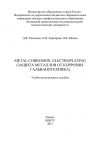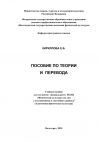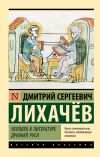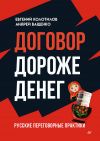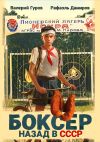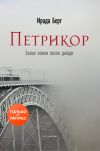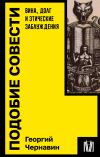Текст книги "What are Polymers? (Что такое полимеры?)"
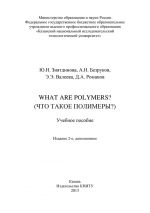
Автор книги: Артем Безруков
Жанр: Учебная литература, Детские книги
сообщить о неприемлемом содержимом
Текущая страница: 2 (всего у книги 6 страниц) [доступный отрывок для чтения: 2 страниц]
Unit 3
SUPRAMOLECULAR STRUCTURE OF POLYMERS
1. Прочитайте текст вслух.
Polymer molecules come in many shapes and sizes. A polymer may be a long chain of a single monomer repeated over and over again or a complex network containing dozens of different types of monomers. The identity, variety, and arrangement of monomers in a polymer molecule affect the chemical and physical properties of the polymer molecule. The arrangement of macromolecules defines bulk properties of the polymer material.
A synthetic polymer may be described as crystalline if it contains regions of three-dimensional ordering on atomic (rather than macromolecular) length scales, usually arising from intramolecular folding and/or stacking of adjacent chains. Synthetic polymers may consist of both crystalline and amorphous regions; the degree of crystallinity may be expressed in terms of a weight fraction or volume fraction of crystalline material. Few synthetic polymers are entirely crystalline.
Polymer crystals frequently do not display the perfection that is usual for low-molar-mass substances. A crystallite may have irregular boundaries and parts of its constituent macromolecules may extend beyond its boundaries. The smallest, regularly repeating material portion contained in a parallelepiped from which a crystal is formed by parallel displacements in three dimensions is called a unit cell.
Unlike in the case of low-molar-mass substances, the unit cell of polymer crystals usually comprises only parts of the polymer molecule and the regularity of the periodic repetition may be imperfect.
Грамматические особенности текста. Выбор значений причастия и предшествующего ему наречия
При переводе причастия в функции левого определения следует учитывать лексическое значение того существительного, которое оно определяет, например:

При переводе причастия в функции правого определения также необходимо учитывать значение существительного (являющегося прямым или косвенным дополнением), которое оно определяет, например:


В технических текстах причастию нередко предшествует лексически связанное с ним наречие. Переводить рекомендуется сначала причастие, а затем наречие, например:

Обратите внимание на перевод словосочетаний, включающих причастие и предшествующее ему наречие: «three-dimensional ordering … usually arising from…», «regularly repeating material portion contained in…» в тексте упражнения 1.
2. Подберите английские эквиваленты из текста к следующим словосочетаниям и выучите их наизусть:


3. Подберите русские эквиваленты к следующим словосочетаниям из текста и выучите их наизусть.

4. Передайте на русском языке основное содержание текста упражнения 1.
5. Прочитайте текст про себя. Передайте устно на английском языке основное содержание текста.
Для молекул белков и нуклеиновых кислот характерно наличие нескольких уровней организации – первичной, вторичной и третичной структур. Первичная структура определяется последовательностью мономеров. Вторичная структура белков образуется при взаимодействии аминокислот с помощью водородных связей и гидрофобных взаимодействий. Третичная структура зависит от взаимодействия вторичных структур, четвертичная, как правило, образуется при объединении нескольких молекул с третичной структурой.
Первичная структура ДНК – это линейная последовательност ь нуклеотидов в цепи. Вторичная структура – это структура, образованная за счёт нековалентных взаимодействий нуклеотидов и водородных связей. Двойная спираль ДНК является классическим примером вторичной структуры.

Это самая распространенная в природе форма ДНК, которая состоит из двух антипараллельных комплементарных полинуклеотидных цепей.
6. Переведите отрывок на русский язык с листа.
The attractive forces between polymer chains play a large part in determining polymer’s properties. Because polymer chains are so long, these interchain forces are amplified far beyond the attractions between conventional molecules. Different side groups on the polymer can lend the polymer to ionic bonding or hydrogen bonding between its own chains. These stronger forces typically result in higher tensile strength and melting points.
The attractive forces between polyethylene chains arise from weak Van der Waals forces. Molecules can be thought of as being surrounded by a cloud of negative electrons. As two polymer chains approach, their electron clouds repel one another. This has the effect of lowering the electron density on one side of a polymer chain, creating a slight positive dipole on this side. This charge is enough to actually attract the second polymer chain. Van der Waals forces are quite weak, however, so polyethylene can have a lower melting temperature compared to other polymers.
7. Переведите отрывок на слух по предложению.
Branching of polymer chains also affect the supramolecular properties of polymers. Long chain branches may increase polymer strength and toughness, due to an increase in the number of entanglements per chain.
Short side chains may likewise reduce crystallinity due to disruption of the crystal structure. Reduced crystallinity may also be associated with increased transparency due to light scattering by small crystalline regions.
A good example of this effect is related to the range of physical attributes of polyethylene. High density polyethylene (HDPE) has a very low degree of branching, is quite stiff, and is used in applications such as milk jugs. Low density polyethylene (LDPE), on the other hand, has significant numbers of short branches, is quite flexible, and is used in applications such as plastic films.
The branching index of the polymer is a parameter that characterizes the effect of long-chain branches on the size of a branched macromolecule in solution.
8. Переведите предложения на русский язык письменно.
1. Tie molecule: a molecule that connects at least two different crystals.
2. Stem: a crystallized, sticklike portion of a polymer chain connected to non-sticklike portions, or chain ends.
3. Chain folding: the conformational feature in which a loop connects two parallel stems belonging to the same crystal.
4. Globular-chain crystal: a type of crystal comprised of macromolecules having globular conformation.
5. Dendrite: a crystalline body produced by skeletal growth, leading to a ‘tree-like’ supramolecular structure.
6. Fibrous crystal: a type of crystal significantly longer in one dimension than in either of the other two.
7. Shish-kebab structure: a polycrystalline structure consisting of fibrous crystals surrounded by lamellar crystals, the stems of which are parallel to the fiber axis.
8. Spherulite: a polycrystalline, roughly spherical morphology consisting of lath, fibrous or lamellar crystals emanating from a common centre.
9. Lath crystal: a lamellar crystal prevailingly extended along one lateral dimension.
10. Extended-chain crystal: a polymer crystal in which the chains are in an essentially fully extended conformation.
9. Переведите предложения на английский язык письменно.
1. Дендрит представляет собой ветвящееся и расходящееся в стороны образование, возникающее при ускоренной кристаллизации, когда кристалл расщепляется по определенным законам.
2. Степень кристалличности полимера определяет его многие объемные свойства.
3. Кристаллическая структура полимеров менее совершенна по сравнению с низкомолекулярными соединениями.
4. Надмолекулярная структура полимеров представляет собой участки кристаллической и аморфной фаз.
5. Полисахариды, синтезируемые живыми организмами, состоят из большого количества моносахаридов, соединённых гликозидными связями.
6. К макроконформационным полимерным образованиям относят дендриты, сферолиты, а также фибриллярные и ламеллярные структуры.
7. ДНК удерживается в двойной спирали за счет комплементарного спаривания оснований – образования водородных связей.
8. Третичная структура белка образуется при взаимодействии вторичных структур и стабилизируется ковалентными, ионными, водородными связями и гидрофобными взаимодействиями.
9. Полиэтилен низкого давления имеет более высокую степень кристалличности по сравнению с полиэтиленом высокого давления.
10. Многие полимерные системы обладают свойством самоорганизации на супрамолекулярном уровне.
10. Переведите словосочетания на слух в быстром темпе.
crystallite – дефекты в упорядоченности – intramolecular folding – аморфная область – constituent macromolecule – fourth order structure – единичная ячейка – parallel displacement – наложение смежных цепей – arrangement of molecules – периодически повторяющийся – кристаллический – macromolecular length scale – сложно-организованная сеть – атомарный масштаб – stacking of adjacent chains – volume fraction – массовая доля – crystalline region – выходить за пределы – imperfect regularity – межмолекулярный – three-dimensional ordering – взаимное расположение молекул – параллельный перенос – unit cell – мольная доля – tertiary structure – degree of crystallinity – repeating material portion – внутримолекулярный – complex network – supramolecular level – первичная структура – двойная спираль.
11. Контрольные вопросы.
1. What scale of polymer structure and properties is called supramolecular?
2. Describe two main types of organization in supramolecular polymer aggregates.
3. What is a crystalline phase?
4. Which one, HDPE or LDPE, is more amorphous?
5. Are polymer crystals more regular than the low molecular weight ones?
12. Передайте основное содержание текстов урока на русском и английском языках.
Unit 4
PHASE BEHAVIOR OF POLYMERS
1. Прочитайте текст вслух.
Consider a polymer which is slowly cooling down. At a certain temperature, the average kinetic energy of macromolecules no longer exceeds the binding energy between neighbouring molecules and the growth of organized solid crystal begins. Formation of an ordered system takes a certain amount of time since the molecules must move from their current location to energetically preferred points at crystal nodes.
As temperature falls, molecular motion slows down further and, if the cooling rate is fast enough, molecules never reach their destination – the substance enters dynamic arrest and a disordered, glassy solid (or supercooled liquid) forms. Such arrest apparently takes place at a certain temperature, which is called the glass transition temperature (Tg).
Above Tg, the secondary, non-covalent bonds between the polymer chains become weak in comparison to thermal motion, and the polymer becomes rubbery and capable of elastic or plastic deformation without fracture.
Polymer macromolecules start to reform due to thermal motion. Application of a stress favors some conformations over others, so the molecules of the polymer will gradually «flow» into the favored conformations over time. This state of a polymer is called a viscous flow state.
Therefore, the phase behavior of polymer materials is more complex in comparison with low molecular weight substances. Although crystalline fragments have a melting point, the amorphous structures have a glass transition temperature separating glass and rubber states.
The plot of deformation vs. temperature (thermomechanical curve) for amorphous polymer

Comparison of polymer states and deformation characteristics

Грамматические особенности текста. Герундий в функции левого определения
Герундий, стоящий слева от существительного, между ним и артиклем, выполняет функцию левого определения. В этой функции герундий морфологически ничем не отличается от причастия в функции левого определения, и поэтому его перевод может представлять трудность. Определить герундий в этой роли можно только по смыслу, а переводить его на русский язык следует существительным. Сравните:

Обратите внимание на перевод герундиев binding, cooling, melting в функции левого определения в тексте упражнения 1.
2. Подберите английские эквиваленты из текста к следующим словосочетаниям и выучите их наизусть.


3. Подберите русские эквиваленты к следующим словосочетаниям из текста и выучите их наизусть.

4. Передайте на русском языке основное содержание текста упражнения 1.
5. Прочитайте текст про себя. Передайте устно на английском языке основное содержание текста.
К термопластичным материалам, или термопластам, относятся полимеры, которые при нагревании переходят из стеклообразного состояния в высокоэластическое и вязкотекучее. В зависимости от температуры аморфные термопласты имеют три физических состояния: стеклообразное, высокоэластическое и вязкотекучее.
Переход из высокоэластического состояния в стеклообразное происходит в некотором диапазоне температур, центр которого называют температурой стеклования. При повышении температуры термопластичный материал переходит из высокоэластического состояния в вязкотекучее. Температура такого перехода называется температурой текучести. Выше температуры текучести в полимере проявляются необратимые деформации вязкого течения.
В кристаллизующихся термопластах аморфная фаза может приобретать описанные выше физические состояния. При нагревании кристаллическая фаза плавится. Температура этого фазового перехода называется температурой плавления.
6. Переведите отрывок на русский язык с листа.
The glass transition temperature corresponds to the temperature where when you heat to and above this temperature, the polymer goes from a hard glassy material to a rubbery material. On a plot of strength vs. temperature, as you go through the glass transition temperature you lose mechanical strength.
A material’s glass transition temperature is the temperature below which molecules have little relative mobility and is usually applicable to wholly or partially amorphous phases.
Above the glass transition temperature, a motion started at one point on a polymer chain will produce results say 50 atoms along the chain away from where the initial disturbance occurred.
Thermoplastic (non-crosslinked) polymers are proved to be complex because, in addition to a melting temperature, Tm, above which all their crystalline structure disappears, such plastics have a second, lower Tg below which they become rigid and brittle, and can crack and shatter under stress.
7. Переведите отрывок на слух по предложению.
Polymer bulk properties are strongly dependent upon their structure and mesoscopic behavior. A number of qualitative relationships between structure and properties are known.
Increasing chain length tends to decrease chain mobility, increase strength and toughness, and increase the glass transition temperature (Tg). This is a result of the increase in chain interactions such as Van der Waals attractions and entanglements that come with increased chain length. These interactions tend to fix the individual chains more strongly in position and resist deformations and matrix breakup, both at higher stresses and higher temperatures.
Crosslinking tends to increase Tg and increase strength and toughness because crosslinking includes formation of chemical bonds between chains. Inclusion of plasticizers tends to lower Tg and increase polymer flexibility. Plasticizers are generally small molecules that are chemically similar to the polymer and create gaps between polymer chains for greater mobility and reduced interchain interactions.
8. Переведите предложения на русский язык письменно.
1. The glass transition temperature is the temperature below which the physical properties of amorphous materials vary in a manner similar to those of a solid phase.
2. Proteins also possess a glass transition temperature below which both anharmonic motions and long-range correlated motion within a single molecule occur.
3. When a stress is applied to a viscoelastic material such as a polymer, parts of the long polymer chain change position.
4. Polymers remain a solid material even when these parts of their chains are rearranging in order to accompany the stress, and as this occurs, it creates a back stress in the material.
5. Vitrification (glass formation below the melting point) can occur when starting with a liquid such as water, usually through very rapid cooling or the introduction of agents that suppress the formation of ice crystals.
6. If a plastic with some desirable properties has a Tg which is too high, it can sometimes be combined with another in a copolymer or composite material with a Tg below the temperature of intended use.
7. The Space Shuttle Challenger disaster was caused by rubber O-rings that were below their glass transition temperature on an unusually cold Florida morning, and thus could not flex adequately to form proper seals between sections of the two solid-fuel rocket boosters.
8. The term «melting point» when applied to polymers suggests not a solid-liquid phase transition but a transition from a crystalline or semicrystalline phase to a solid amorphous phase.
9. The boiling point of a polymer substance is never defined due to the fact that polymers will decompose before reaching theoretical boiling temperatures.
10. Thermosetting polymers will decompose at high temperatures rather than melt.
9. Переведите предложения на английский язык письменно.
1. Свойства кристаллизующихся полимеров зависят от содержания кристаллической фазы.
2. Переход из высокоэластического состояния в вязкотекучее происходит в определенном интервале температур.
3. Полимер в высокоэластическом состоянии способен к большим обратимым деформациям, достигающим сотен и более процентов.
4. При нагревании аморфного материала обычно визуально наблюдается нефазовый переход, напоминающий процесс плавления для кристаллизующихся термопластов.
5. Большинство промышленных полимеров используются в высокоэластическом или стеклообразном состояниях.
6. Реактопласты отверждаются при переработке и не способны далее переходить в жидкое агрегатное состояние.
7. Есть материалы, которые могут быть аморфными или кристаллизоватьс яв зависимости от условий переработки.
8. Пигменты и другие добавки, действуя как нуклеаторы (центры кристаллизации), могут значительно изменять структуру и свойства кристаллизующихся материалов.
9. В зависимости от метода определения температура стеклования может значительно изменяться.
10. При повышении температуры стеклования повышается температура эксплуатации аморфного материала.
10. Переведите слова и словосочетания на слух в быстром темпе.
binding energy – с течением времени – замедление движения – glass transition temperature – organized solid crystal – пластическая деформация – crystal node – медленно охлаждающийся – фазовые свойства – thermal motion – нековалентная связь – neighboring molecules – определенное время – сверхохлажденная жидкость – energetically preferred points – динамическая блокировка – favored conformation – elastic deformation – стеклообразное состояние – thermoplastic polymers – приложение нагрузки – viscous flow state – melting point – glassy solid – вязкотекучее состояние – rubber state – разупорядоченный – stress – стеклование – ordered system – разлом – термореактивные полимеры.
11. Контрольные вопросы:
1. Is there any difference between glass transition and crystallizing?
2. Describe three types of amorphous polymer phase states.
3. What structure of a polymer body corresponds to glassy state?
4. Does glass-transition temperature correspond to a single temperature point or temperature range?
5. Can we take a crystal (even a low molecular weight one) and transform it into a glassy state body?
12. Передайте основное содержание текстов урока на русском и английском языках.
Unit 5
PROCESSING OF POLYMERS
1. Прочитайте текст вслух.
Processing is the source of much of the variability in properties of synthetic polymers. Different processing conditions determine the difference between a milk jug and, to a great extent, high strength PE fibers (ultra oriented). Processing is one component of a series of steps that lead to a plastic product or component from raw feed stocks. Although each commodity polymer has a somewhat different sequence of industrial stages involved in bringing it to market, a simple and fairly exemplary case is a polyethylene bottle of shampoo.
The various grade polymers are partly composed of blends of different branch content, molecular weight and density from different synthetic reaction conditions. For example, a film blowing grade of polyethylene might contain a blend of linear low density polyethylene, branch content metallocene polyethylene and low density polyethylene.
Polymers offer certain unique problems in processing. They are viscoelastic fluids which display high viscosity and broad transition temperatures. Machinery is large and involves a significant energy input. Polymers degrade (chain breakup) resulting in a loss of properties with exposure to high temperatures and stress for an extended period of time.
Some basic processing operations and machinery are extrusion, screw extruder, fiber drawing, injection molding, blow molding, dip coating, calendering, mixing/dispersion, melting, modification, and introduction of additives.
Грамматические особенности текста. Группа существительного с левыми определениями
В английской научно-технической литературе широко используются группы (так называемые цепочки) существительного, которые являются кратким и более универсальным, чем в русском языке, способом выражения мысли. Наиболее распространены группы существительного с левыми определениями (стоящими слева от него). Определением может быть как другое существительное, так и прилагательное, причастие, наречие или их комбинация, а начинатьсятакая группа может с предлога, артикля или местоимения. Часто определения соединяются дефисом.
В технических текстах слова, входящие в группу существительного, как правило, являются терминами, поэтому перевод таких групп может представлять существенную трудность. Переводить группу существительного с левыми определениями следует начинать с главного слова (существительного), стоящего последним в группе, двигаясь справа налево и устанавливая с помощью вопросов смысловые отношения между словами, например:

Логическая связь между словами в группе существительного с левыми определениями может быть последовательной или смешанной. В первом случае вопрос к последующему слову задается от предыдущего, во втором случае вопрос к определению может задаватьс якак от предыдущего определения, так и от главного слова. При переводе на русский язык это влияет на порядок расположения определений относительно главного слова, например:

Обратите внимание на связь слов в группах существительного с левыми определениями: different processing conditions, high strength PE fibers, various grade polymers, different synthetic reaction conditions, film blowing grade, linear low density polyethylene, branch content metallocene polyethylene, broad transition temperatures, chain breakup и их перевод в тексте упражнения 1.
2. Подберите английские эквиваленты из текста к следующим словосочетаниям и выучите их наизусть.

3. Подберите русские эквиваленты к следующим словосочетаниям из текста и выучите их наизусть.


4. Передайте на русском языке основное содержание текста упражнения 1.
5. Прочитайте текст про себя. Передайте устно на английском языке основное содержание текста.
Экструзия – это непрерывный технологический процесс, заключающийся в продавливании материала, обладающего высокой вязкостью в жидком состоянии, через формующий инструмент (экструзионную головку, фильеру), с целью получения изделия с поперечным сечением нужной формы.
В промышленности переработки полимеров методом экструзии изготавливают различные изделия, такие, как трубы, листы, пленки, оболочки кабелей и т.д. Основным технологическим оборудованием для переработки полимеров в изделия методом экструзии являются одночервячные и двухчервячные экструдеры. Главным требованием, предъявляемым к червячным машинам, является гомогенизация расплава (равномерное перемешивание и распределение различных добавок, равномерность температурного поля) при высокой производительности.
По характеру протекающих в канале червяка экструдера процессов можно условно разделить червяк на несколько зон:
– зона питания или транспортировки твердого материала;
– зона плавления или пластикации;
– зона дозирования или транспортирования расплава.
6. Переведите отрывок на русский язык с листа.
Polymer processing is of importance to a variety of parts of a fairly intricate industrial complex. Understanding some of the features of polymer processing can be an asset in dealing with production problems encountered not only in the polymer and plastics industry but in almost every area of manufacturing ranging from biomedical devices to microelectronics.
Following the motives of other chemical engineering disciplines, polymer processing can be categorized according to type of equipment used (unit operations): extrusion, injection molding, blow molding, calendering, mixing/dispersion, rotational molding. The unit operations approach is a historic approach and was largely given up in the chemical engineering field with the rapid advent of new and diverse operations.
The modern chemical engineering approach is to study the elementary steps (or physical stages) of all unit operations in a single focal area and to then demonstrate how these elementary steps fit into each of the typical unit operations. For example, elementary steps of polymer processing may include: particulate solids processing, melting, pressurization and pumping, mixing, molding, devolatilization and etc.
7. Переведите отрывок на слух по предложению.
Additives are used in polymers to prevent polymer degradation, resulting from exposure to heat, shear and light. They broaden the property and application range by providing higher functionality and enhanced performance.
Synergistic antioxidant blends, comprising phosphites or phosphonites and phenols, are used to ensure thermal and processing stability during pelletization, processing and end-use.
Ultraviolet light, the same type that causes skin to sunburn, can initiate chemical reactions in polymers, resulting in polymer chain destruction and loss of chemical and physical properties. The light stabilizers can improve the light stability of polypropylene. These are, for example, ultraviolet light absorbers or hindered amine/amide light stabilizers.
Besides additives for thermal, processing and light stability, other additives, such as nucleating agents, antistats, slip agents and colorants may also have to be added to achieve the desired property portfolio of a given polymer grade.
8. Переведите предложения на русский язык письменно.
1. Because of its simplicity and ability to deliver high shear rates the screw extruder is a crucial component of almost every polymer processing operation.
2. Injection molding is a manufacturing technique for making parts from both thermoplastic and thermosetting plastic materials in production.
3. Typically, HDPE grades for blow molding are pelletized under high shear and high temperatures (often above 260 °C).
4. Extrusion is a manufacturing process used to create long objects of a fixed cross-sectional profile.
5. Vacuum forming is a process where a sheet of plastic is heated to a forming temperature, stretched onto or into a single-surface mold, and held against the mold by applying vacuum between the mold surface and the sheet.
6. Molten plastic is injected at high pressure into a mold, which is the inverse of the product’s shape.
7. Thermoforming is a manufacturing process for thermoplastic sheet or film. The sheet or film is heated between infrared, natural gas, or other heaters to its forming temperature.
8. Casting is a manufacturing process by which a liquid material such as a polymer melt is introduced into a mould, allowed to solidify within the mould, and then ejected or broken out to make a fabricated part.
9. Blow molding or blow forming is a manufacturing process by which hollow plastic parts are formed.
10. In extrusion blow molding, plastic is melted and extruded into a hollow tube that is then captured by closing it into a cooled metal mold.
9. Переведите предложения на английский язык письменно.
1. В широком смысле переработку полимеров можно рассматривать как некую инженерную специальность, занимающуюся превращением исходных полимерных материалов в требуемые конечные продукты.
2. В настоящее время имеется множество процессов и методов переработки полимеров, основными из них являются каландрование, литье, прессование, литье под давлением, экструзия и т.д.
3. Процесс введения в полимер модифицирующих добавок называется компаудированием.
4. Полимеры, полученные путем полимеризации, обычно представляют собой мелкие гранулы или порошок и должны быть подготовлены к дальнейшей переработке.
5. В расплав или раствор полимера перед переработкой вводят такие компоненты, как пластификаторы, стабилизаторы, наполнители и т.д.
6. Процесс каландрования обычно применяют для производства непрерывных пленок и листов.
7. Полые изделия, такие, как мячи и куклы, получают в процессе, называемом «ротационное литье».
8. Наиболее удобным процессом для производства изделий из термопластичных полимеров является процесс литья под давлением.
9. Метод прямого прессования широко используется для производства изделий из термореактивных материалов.
10. Вспенивание является простым методом получения пенообразных и губкообразных материалов.
10. Переведите словосочетания на слух в быстром темпе.
условия переработки – fiber drawing – воздействие нагрузок – blends – вытягивание волокна – разрушение полимера – commodity polymer – диспергирование – variability in properties – raw feed stock – марка полимерного материала – последовательност ь промышленных процессов – loss of properties – calendering – screw extruder – нанесение покрытия погружением – to a great extent – сверхвысокоориентированный – processing operations – воздействие высоких температур – exemplary case – литье под давлением – модификация – branch content metallocene polyethylene – экструзия – вывод на рынок – significant energy input – оборудование.
11. Контрольные вопросы.
1. What are the main stages of polymer processing?
2. What is the typical machinery for polymer processing?
Внимание! Это не конец книги.
Если начало книги вам понравилось, то полную версию можно приобрести у нашего партнёра - распространителя легального контента. Поддержите автора!Правообладателям!
Данное произведение размещено по согласованию с ООО "ЛитРес" (20% исходного текста). Если размещение книги нарушает чьи-либо права, то сообщите об этом.Читателям!
Оплатили, но не знаете что делать дальше?